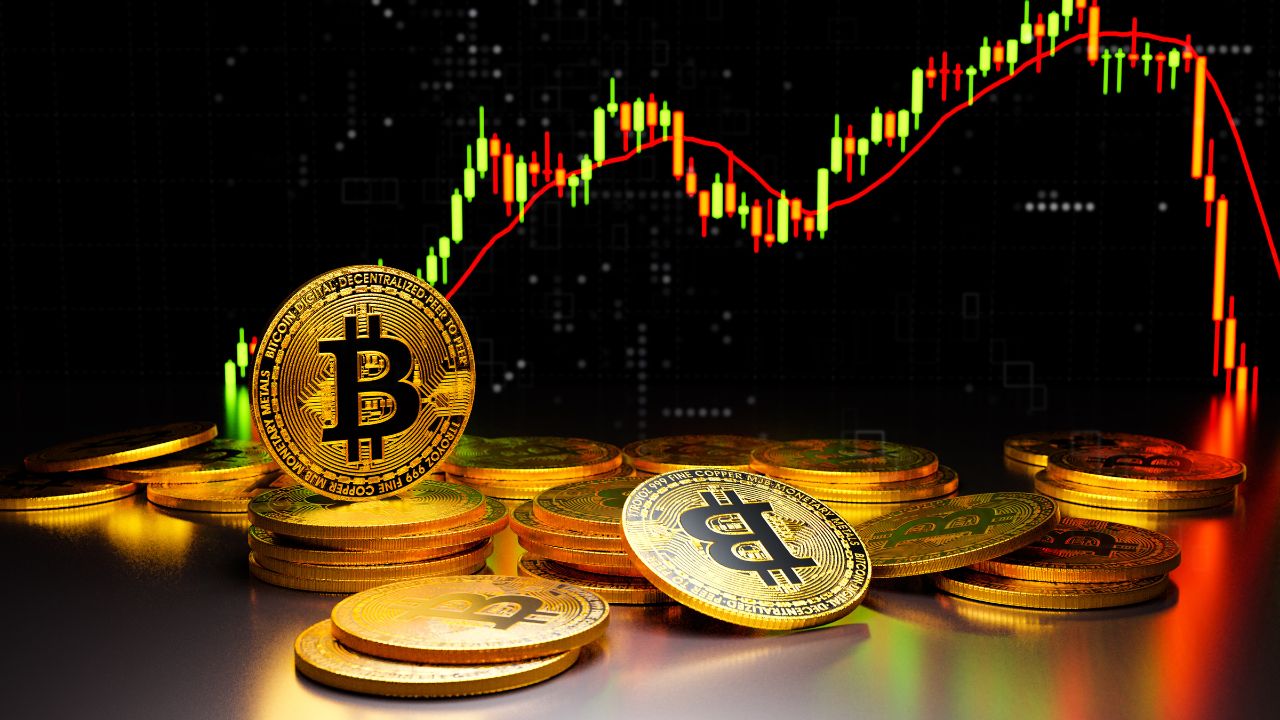Feeling overwhelmed by crypto’s noise? You’re not alone. With thousands of tokens launching and trending daily, it’s hard to know what’s real and what’s hype. Here’s the good news: you don’t need inside connections—you need a repeatable framework. In this guide, we’ll show you exactly how to research crypto before investing using a simple, scalable process: evaluate the technology, vet the team, measure traction, inspect tokenomics, and stress-test security. We’ll layer in on-chain checks, liquidity health, legal considerations, and a quick “red flags” scan. You’ll finish with a one-page research template and toolkit so you can move from guessing… to investing with conviction. Let’s dive in!
You can dive deeper into the details and insights by reading the full Project Serenity review here. It’s the best way to see exactly how it works, the benefits it offers, and whether it’s right for you.
Start With a 15-Minute Triage (Quick T4 Snapshot)
Technology
Identify the real-world problem the project claims to solve. Check if there’s a functioning product, live testnet, or at least a working demo. Look for active code development and security audits to verify progress and quality.
Team
Confirm whether the founders and key contributors are publicly known and have credible backgrounds. Evaluate their professional track record and past achievements. Strong backing from reputable investors or advisors can be an additional confidence signal.
Traction
Review signs of actual adoption, such as the number of active users, total value locked (TVL), transaction fees, and integration partnerships. Check for meaningful exchange listings and an engaged community that shows genuine interaction.
Tokenomics
Analyze token supply, distribution, and unlock schedules. Look at the utility of the token and how it connects to the project’s success. Be cautious of concentrated insider allocations or aggressive vesting cliffs that could lead to price dumps.
Verdict
If two or more of these pillars appear weak, it’s usually safer to monitor the project from your watchlist rather than investing right away. This approach filters out weaker projects before you commit serious time or capital.
Discover the full details of Project Serenity here and see why it’s creating a buzz among investors.
Assess the Technology (Product, Code, Architecture)

Problem–Solution Fit and Chain Selection
Start by confirming the project addresses a real, significant problem in the crypto ecosystem. Evaluate whether its solution is practical, scalable, and competitive. Check the blockchain architecture choice—whether it’s built on a Layer-1, Layer-2, or is a multichain protocol—and how that impacts speed, fees, and interoperability.
Code Activity and Security Practices
Investigate the project’s development transparency by reviewing its public code repositories. Look at the frequency of commits, number of contributors, and release history. Verify if the project has undergone reputable third-party audits, offers bug bounties to incentivize vulnerability reporting, and has a history free from major security incidents.
Decentralization Levers and Governance Control
Assess how decentralized the protocol truly is. Look for indicators such as the presence of admin keys, multisignature control over critical functions, and the ability for the team to pause or alter the system. While these controls can protect users during early stages, excessive centralization poses long-term trust and censorship risks.
Start your journey toward financial freedom with Project Serenity today.
Verify the Team & Backers (People & Incentives)
Founders and Core Contributors
Investigate who is behind the project. Look for founders and lead developers with public, verifiable profiles—LinkedIn, GitHub, previous media appearances—and a transparent track record. Review their history of wins and failures in the crypto or tech space to assess credibility and execution ability.
Investor Quality and Financial Alignment
Check whether the project has reputable backers, such as established seed investors, venture capital firms, or well-known angel investors. Assess the alignment of incentives—do investors have reasonable vesting schedules, or could they dump tokens early? Evaluate the project’s treasury size and runway to determine if it can sustain operations without rushing into risky funding moves.
Hiring, Governance, and Communication
Analyze hiring velocity—are they growing the team steadily, or shrinking during critical stages? Review governance transparency by checking if major decisions are voted on by the community or made behind closed doors. Look at communication cadence across social channels, developer updates, and AMAs; consistent, honest updates are a sign of trustworthiness and accountability.
Learn how you can unlock new investment opportunities through Project Serenity.
Analyze Tokenomics & Value Accrual

Supply Metrics and Market Valuation
Begin by reviewing the token’s maximum supply, total supply, and current circulating supply. Compare the fully diluted valuation (FDV) to the circulating market cap—large gaps can indicate significant dilution risk as locked tokens are released. Examine emissions schedules to see how quickly new tokens enter the market.
Distribution and Vesting
Study the allocation breakdown between team members, investors, community incentives, and ecosystem funds. Look for fairness and balance—heavy team or investor allocations with short cliffs and rapid vesting can create intense sell pressure. Ideally, vesting schedules should extend over several years to align long-term incentives and reduce early dumping.
Utility and Value Drivers
Evaluate why the token must exist within the project’s ecosystem. Does it collect fees, enable staking rewards, or participate in governance? Are there mechanisms like token burns that can reduce supply over time? Assess whether demand for the token will grow with user adoption or if it’s only a speculative asset without intrinsic demand drivers.
Check out Project Serenity’s exclusive program and see if it’s the right fit for you.
Measure Traction & Adoption (On-Chain + Off-Chain)
On-Chain Activity and Engagement
Start by examining blockchain-level metrics that reveal actual network and user activity. Track the number of active wallet addresses, daily transaction volumes, and protocol-specific KPIs like Total Value Locked (TVL). Consistent growth in these metrics often signals healthy adoption. Review protocol fees, revenues, and user retention rates—projects that generate recurring usage tend to have more sustainable momentum.
Off-Chain Partnerships and Integrations
Look beyond the blockchain to see how well the project connects with the broader ecosystem. Strong partnerships with reputable protocols, integrations into wallets or DeFi platforms, and a thriving developer ecosystem all boost credibility. Also, pay attention to the availability of SDKs, APIs, and developer tools—these resources make it easier for others to build on top of the project.
Community Depth and Delivery Record
A vibrant, engaged community is often a leading indicator of long-term success. Assess the quality of community interaction rather than just follower counts, which can be inflated by bots. Well-organized documentation, responsive support channels, and consistent roadmap delivery are critical. A project that meets milestones on time and keeps stakeholders updated inspires trust and attracts more users.
Ready to take the next step? Explore Project Serenity now.
Security, Audits & Admin Controls

Audit History and Transparency
Review whether the project has undergone security audits from reputable, named firms, and check the scope and date of each audit. Ongoing vulnerability bounty programs show the team’s commitment to continuous security improvements. Public audit reports should be accessible so investors can verify findings and follow-up actions.
Administrative Powers and Potential Risks
Understand who holds the upgrade authority for smart contracts—centralized control can be a double-edged sword. Look for any minting, blacklisting, or pausing powers that could impact users’ funds. Oracle design is another key point; poorly chosen or manipulated price feeds have been the root cause of multiple exploits in DeFi history.
Incident Response and Recovery Protocols
Investigate whether the project has a history of hacks, exploits, or downtime. If incidents have occurred, assess the quality of their post-mortems and the effectiveness of their remediation steps. A clearly defined disaster-recovery playbook—covering communications, patch timelines, and compensation plans—signals strong operational maturity.
Discover what makes Project Serenity different from anything you’ve tried before.
Liquidity, Market Structure & Holder Distribution
Exchange Listings and Liquidity Depth
Evaluate where the token is listed—both centralized exchanges (CEX) and decentralized exchanges (DEX). Deep order books on reputable CEXs or strong liquidity pools on DEXs reduce slippage and make it easier to execute trades at your desired size. Always check actual trade depth rather than relying solely on reported volumes.
Holder Concentration and Wallet Analysis
Review the distribution of token holdings. A high percentage of supply held by the top 10 wallets can indicate centralization risk and potential for market manipulation. Identify whether these wallets belong to exchanges, smart contracts, or private holders. Tokens concentrated in a few unknown wallets should be approached with caution.
Volume Quality and Market Integrity
Scrutinize trading volume to distinguish organic activity from wash trading, which is common on less reputable platforms. Look for red flags like identical buy/sell orders or sudden, unrealistic spikes in volume. Also, consider upcoming token unlocks, vesting schedules, or large airdrop overhangs that could increase selling pressure and affect price stability.
Click here to learn more about Project Serenity and how it works.
Competitive Landscape & Narrative Fit
Category Mapping
Place the project on the map before judging it: DeFi, AI, RWA (real-world assets), gaming, infrastructure, Layer-2 scaling, data/analytics, or privacy/oracles. Identify direct peers and adjacent categories it must integrate with (e.g., wallets, L2s, stablecoins). This clarifies the addressable market, partner surface area, and the benchmarks you’ll compare against.
Moat Assessment
Evaluate defensibility beyond buzzwords.
- Performance: throughput, latency, finality, cost per action.
- UX: onboarding friction, wallet flows, fiat ramps, support.
- Network Effects: liquidity depth, builder momentum, composability, cross-protocol usage.
- Partnerships: credible integrations, enterprise pilots, ecosystem grants.
Ask: what gets stronger as usage grows—and what would be hard for a competitor to copy in 6–12 months?
Narrative Tailwinds & Catalysts (3–12 Months)
List near-term winds that could lift adoption: upcoming mainnet/releases, major listings, token unlock completion, inclusion in ecosystem funds, regulatory clarity in core regions, or alignment with hot narratives (e.g., AI + crypto, RWAs, modular/L2, restaking, DePIN). Tie each catalyst to a measurable KPI (TVL, fees, DAU, partners signed) and note timing risk. If the project’s story cleanly rides a rising narrative—and has product readiness to capture it—you’ve got fit.
Get insider access to the benefits of Project Serenity today.
Legal & Regulatory Considerations
Jurisdiction & Terms
Identify the project’s home jurisdiction and the laws that apply. Review its terms of service, privacy policy, and whitepaper disclaimers to spot any legal gaps. Understand whether operations fall under crypto-friendly hubs (e.g., Switzerland, Singapore, UAE) or more restrictive jurisdictions. Note if the project incorporates in one region but operates globally, which can create regulatory gray areas.
KYC/AML & Compliance Touchpoints
Check if the platform enforces Know Your Customer (KYC) and Anti-Money Laundering (AML) processes. This might include ID verification for token sales, exchange listings, or staking rewards. Absence of these measures in certain jurisdictions could invite enforcement actions.
Securities & Geo-Restrictions
Assess whether the token could be considered a security under U.S. SEC guidelines or EU MiCA rules. Look for geo-blocking of high-risk regions (U.S., China, sanctioned countries). If a token sale avoided certain markets, note why—this often signals underlying legal concerns.
Intellectual Property & Licensing
Verify if the code is open-source and under what license (MIT, GPL, Apache) or proprietary. Check for IP disputes or unclear licensing that could disrupt development.
Sanctions & Exposure
Ensure the project has no direct or indirect exposure to OFAC-sanctioned individuals or entities. Review how the team handles cross-border compliance, especially if serving both retail and institutional clients.
Compliance Roadmap
Look for evidence of ongoing compliance planning—e.g., hiring legal counsel, forming regulatory partnerships, or adapting to upcoming laws. This can be a competitive moat in highly regulated segments like stablecoins, RWAs, or tokenized securities.
Your breakthrough could start with Project Serenity—find out how.
Build a Risk Log & Position-Sizing Plan

Identify Top Risks
List your 3–5 biggest risks for the project or portfolio. This should include:
- Technology: Bugs, exploits, or protocol failures.
- Market: Extreme volatility, macroeconomic shocks.
- Governance: Centralized decision-making, hostile proposals.
- Legal: Regulatory crackdowns, changing compliance rules.
- Liquidity: Low trading volume, high slippage risk.
Size Positions by Conviction & Liquidity
Allocate capital based on confidence level and market depth.
- High-conviction core assets (BTC, ETH): 5–10% each.
- Smaller, speculative caps: 1–3% each.
- Avoid overloading into illiquid tokens, especially if you can’t exit without moving the market.
Define Invalidation Criteria
Set clear rules for when to exit or reduce exposure:
- Technical: Project fails audits or misses critical roadmap milestones.
- Market: Price breaks below long-term support.
- Governance: Sudden leadership changes, toxic community shifts.
Set a Review Cadence
Review your risk log and allocations quarterly (or more often in volatile conditions). Adjust based on changes in fundamentals, liquidity, or your own financial situation. This keeps your plan aligned with reality instead of outdated assumptions.
Dive into the full story behind Project Serenity now.
Red Flags Checklist (Walk Away Fast If…)
Unrealistic Promises
- Claims of guaranteed returns, “risk-free APY,” or zero risk investing.
- Any project pushing impossible profit numbers without transparency.
Shady Team & Control
- Fully anonymous team with no credible background or track record.
- No third-party security audit and sole admin key control over the protocol.
Dangerous Token Dynamics
- Massive token unlocks scheduled soon that could flood the market.
- Heavy insider token dominance with little distribution to the public.
- Sudden paid shill spikes or suspicious influencer promotions.
No Real Product
- All hype and only marketing—no working product, testnet, or code.
- Token exists without clear utility, serving no functional role in the ecosystem.
These warning signs are major exit signals. Even one should raise suspicion—several together mean it’s time to walk away immediately.
Take advantage of everything Project Serenity has to offer.
DIY Research Toolkit (Web, Data, Alerts)
On-Chain Explorers & Analytics Dashboards
- Use platforms like Etherscan, BscScan, or Solscan to track wallet activity, contract interactions, and transaction history.
- Leverage analytics tools such as Dune, DefiLlama, Token Terminal, or Nansen for visualized on-chain data, TVL trends, and whale movements.
Portfolio & Alert Apps
- Keep tabs on your investments with trackers like CoinStats, Delta, or Zapper.
- Set price, volume, and wallet-activity alerts on CoinGecko, TradingView, or via DexScreener notifications to stay ahead of market shifts.
Audit Repositories & Code Checks
- Review project GitHub/GitLab repos for update frequency, open issues, and developer activity.
- Search for published audit reports from trusted firms; verify on platforms like Certik, OpenZeppelin, or Trail of Bits.
Community & Governance Hubs
- Follow official forums, DAO governance pages, and Discord/Telegram channels for real-time discussions and proposals.
- Monitor Snapshot.org voting histories for governance patterns and community sentiment.
Information Feeds
- Subscribe to quality crypto newsletters (Bankless, Coin Bureau, Messari) and podcasts for in-depth analysis.
- Join developer-focused spaces like ETH Research, Crypto Twitter dev threads, or LayerZero / DeFi dev chats.
- Always cross-verify information from multiple credible sources to filter hype from reality.
One-Page Research Template (Deliverable for Writers)
Thesis (2–3 Lines)
- Summarize the project’s mission, core value proposition, and why it’s worth considering.
- Keep it concise but impactful—capture the “why now” factor.
Market Fit & Differentiation
- Define the target audience or sector (DeFi, gaming, AI, L2 infrastructure, etc.).
- Highlight what sets the project apart: unique tech, partnerships, token model, or user experience improvements.
Key Metrics (With Sources)
- Current user base and growth trends.
- Total Value Locked (TVL), protocol fees/revenue, transaction volumes.
- Reference verifiable data from sources like DeFiLlama, Token Terminal, or official dashboards.
Tokenomics Snapshot
- Max and circulating supply.
- Unlock schedule, vesting cliffs, and emission rate.
- How value accrues to token holders (staking, burns, governance, fee sharing).
Catalysts (Top 3)
- Product launches, integrations, or new partnerships.
- Upcoming governance votes or token utility upgrades.
- Macro or sector-specific tailwinds (e.g., ETF approvals, narrative growth).
Risks (Top 3)
- Security vulnerabilities or admin control risks.
- Regulatory uncertainty.
- Weak adoption metrics or liquidity issues.
Plan
- Entry price range or DCA plan.
- Position size percentage relative to portfolio.
- Invalidation criteria (e.g., losing core partnerships, tech delays).
- Review date for reassessment (e.g., quarterly).
Conclusion
Researching a crypto project before investing isn’t guesswork—it’s a disciplined process. By running through the full framework—technology, team, traction, tokenomics, security, liquidity, and legal factors—you create a structured way to separate potential winners from risky gambles.
Start small, commit your reasoning to paper, and revisit it with a consistent review rhythm. This way, you’re not just chasing trends—you’re building a repeatable decision-making system that can evolve as the market does.
📌 Pro tip: Bookmark this checklist and pair it with the one-page research template. Use it for every project you evaluate, so you invest with confidence and clarity rather than emotion or hype.
See why so many are talking about Project Serenity and join the movement.

